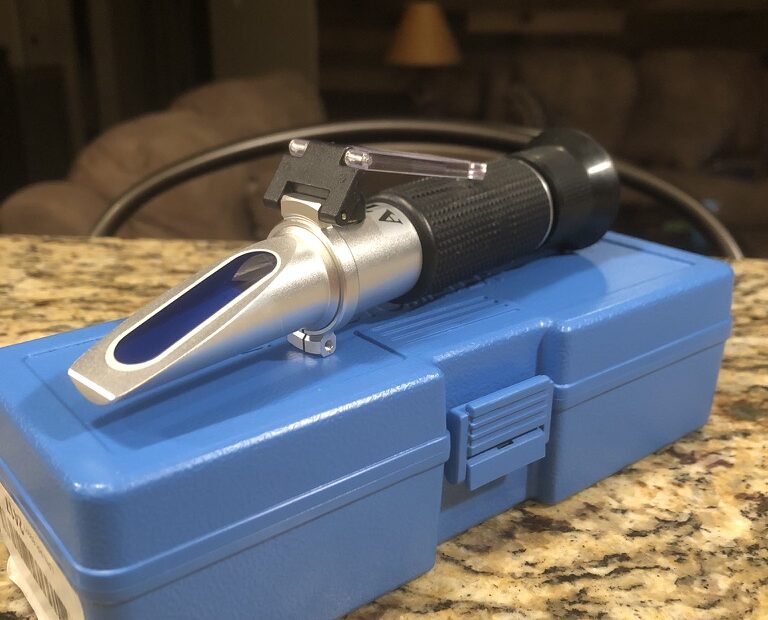Have you ever considered using a refractometer to measure gravity vs using the standard hydrometer? In this article, I will show you how to use a refractometer. We will also discuss how a refractometer works along with benefits and downsides to using a refractometer.
What is a Refractometer?
A refractometer is a device used to measure concentrations of liquids. These devices generally measure the concentrations in Brix and/or specific gravity.
The Brix scale is calibrated to the number of grams of cane sugar contained in 100 mL of water.
How does a Refractometer Work?
A refractometer works by measuring the degree of which light changes direction when it enters a liquid. A refractometer uses a calibrated scale to correlate the refraction angle with the refractive index.
There is a prism contained within the refractometer. The measurements are taken at the point that the prism and the solution meet. This generally appears at the line where the border of a white area meets a dark blue area.
How to Use Refractometer
First, ensure that the sample plate (angled prism) is clean and dry. Next, lift the clear cover and place a couple drops of wort or beer on the sample plate. I prefer to use pipettes because it makes me feel like I’m a scientist again, but a spoon works just fine too.
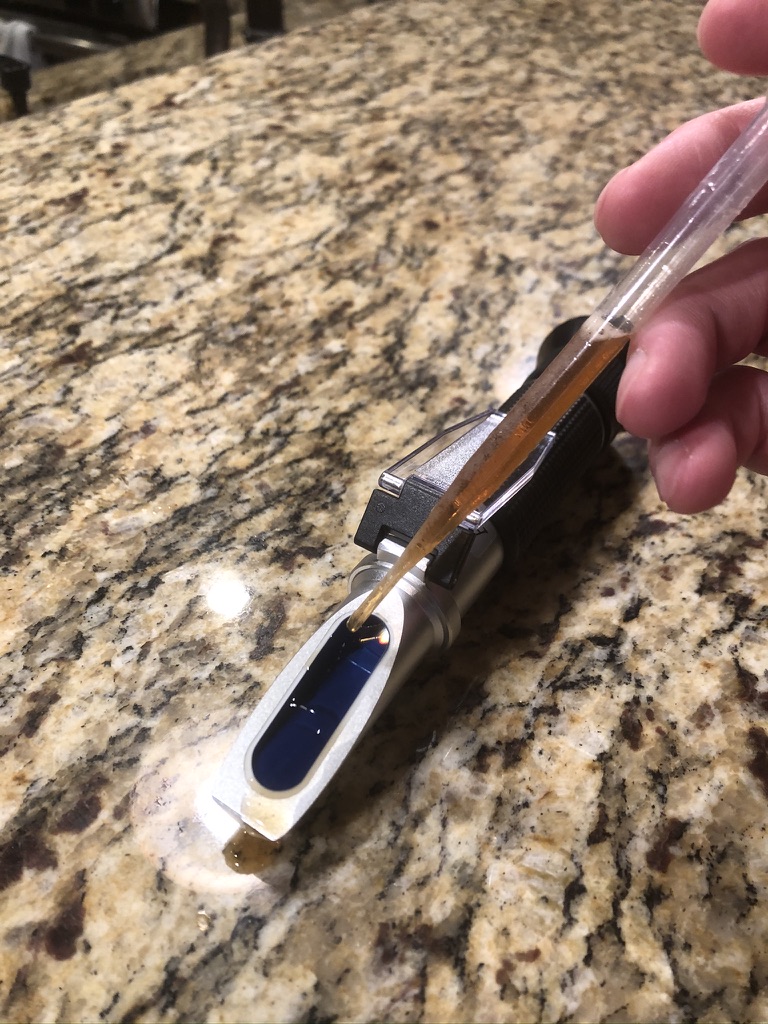
Place the clear cover back down on the sample plate. The liquid should cover the entire sample plate without bubbles.
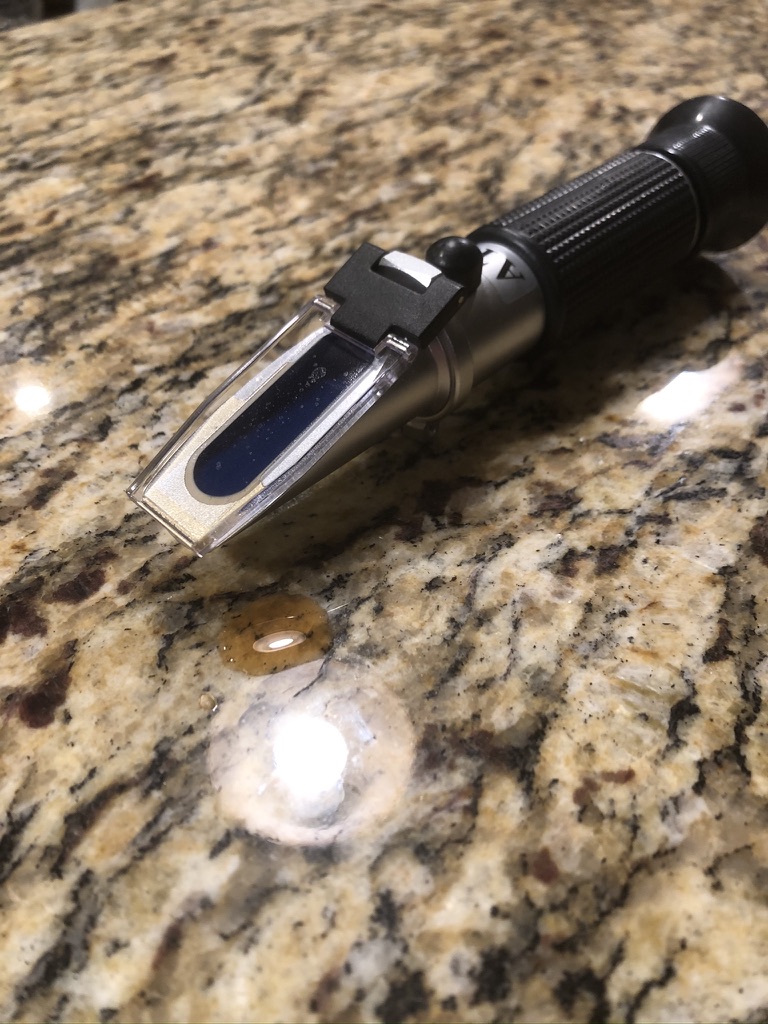
Then, look through the eyepiece into direct light. You should see a well-defined line between a white region on bottom meeting a blue region on top. This line is your gravity measurement. Write this down. If you are taking a final gravity, please make sure to continue reading for additional information.
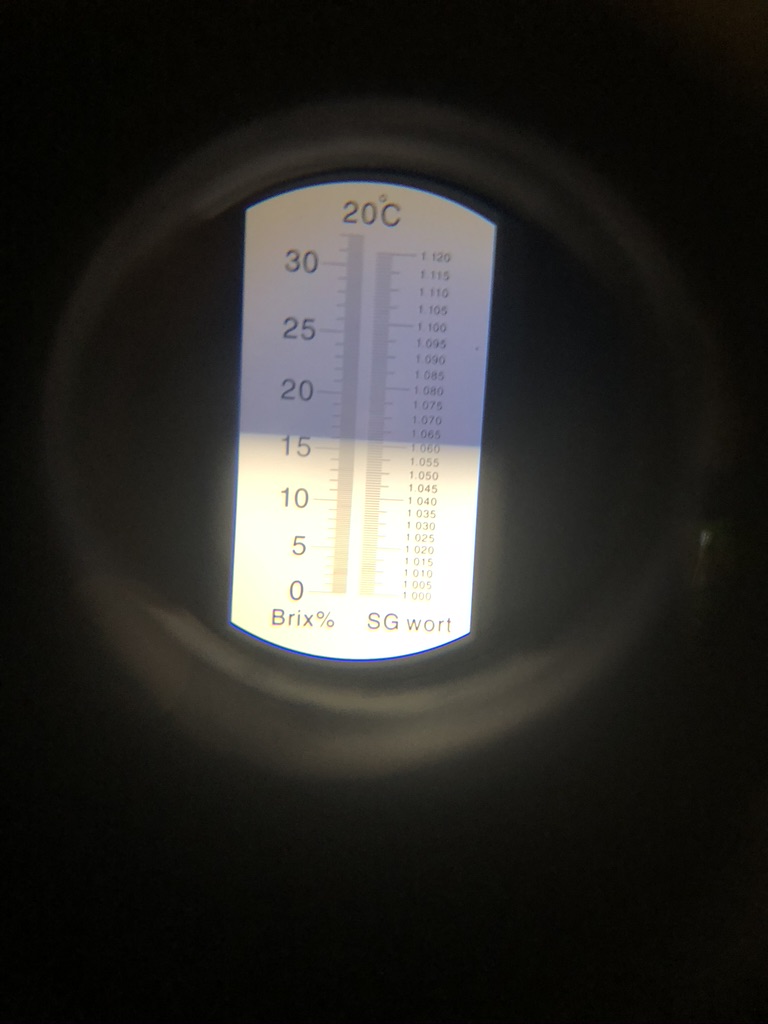
How to Clean Refractometer
Cleaning a refractometer is fairly simple. The easiest way is to make sure that every time that you use it, you quickly rinse the sample plate with water. I always recommend wiping the refractometer with the provided cloth or a soft microfiber cloth.
How to Calibrate Refractometer
To calibrate a brewing refractometer, you will need to pick up some distilled water. Instead of placing drops of wort or beer on the sample plate (angled prism), place distilled water on the prism. Distilled water should read exactly at 0. If your refractometer is reading higher or lower, please turn the calibration screw with the correct size screwdriver until it reads exactly at 0.
You could also calibrate a sample of wort with a known gravity (taken with a hydrometer).
It is truly that simple!
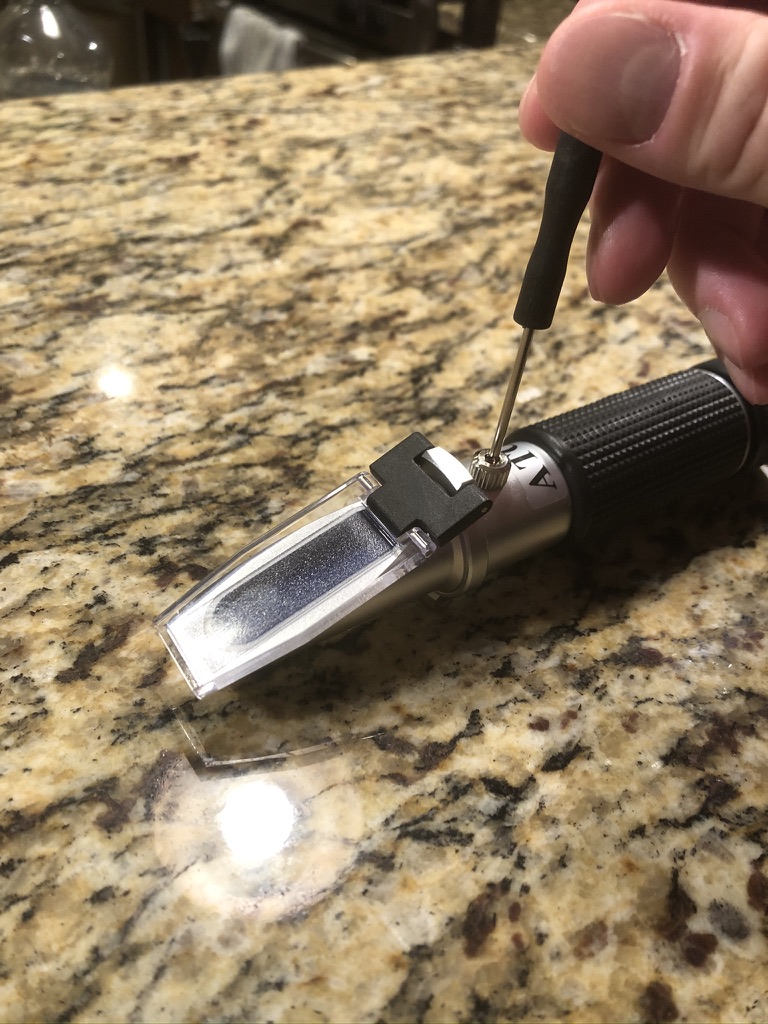
The refractometer should remain calibrated for a awhile and does not need to be calibrated before each use.
Refractometer vs Hydrometer
The largest benefit to using a refractometer is the small volumes of liquid you need to measure gravity. You need less than 1% of the volume that you would need to measure when using a hydrometer. This is especially handy when brewing small batches.
Refractometers are also more durable than hydrometers. I’m not sure how everyone else feels, but I know I always get nervous that my hydrometer is going to drop and break everywhere!
However, refractometers do generally cost more than hydrometers do, and likely you already own a hydrometer. I have been using this fairly inexpensive refractometer for a couple years with good success.
Another downside to refractometers is the inaccuracy when measuring final gravities. As refractometers use refraction of light to measure gravity vs. measuring buoyancy combined with the fact that alcohol distorts this refraction of light, measurements taken after fermentation are not accurate on their own. These readings can still be used, however, with a calculator discussed below.
How to Calculate Final Gravity with a Refractometer
As stated above, a refractometer does have some limitations when measuring final gravity. This is due to the fact that alcohol distorts how the light is bent in the liquid.
If you would still like to use a refractometer to measure final gravity, you will need to use a calculator and provide the original Brix along with the final Brix. It is important to ignore the specific gravity on the refractometer when taking a final gravity because this will always be inaccurately elevated.
Take your original and final Brix and plug it into the middle calculator on this page.
Should I buy a Refractometer?
Now that you know how a refractometer works, how to use one, and the benefits/downsides to using a refractometer, you need to decide if it is right for you to purchase the tool.
If you are an extract brewer, I would say that a refractometer is not absolutely necessary, but it can still make your life much more convenient due to the small volumes of wort/beer required for measurements.
However, if you are brewing in a bag or brewing all-grain batches, I would highly recommend purchasing a refractometer. It is important when brewing with these methods to measure gravity during the mash, sparge, and boil.
It is much more realistic to remove and cool 1-3mL of wort than it is 3/4 cups during these times.
Speaking of cooling, I would recommend purchasing a refractometer that has automatic temperature correction (ATC). This means that the refractometer will automatically adjust for any gravity variations due to temperature. However, it is still important to remember that this function only really works when the liquid is below about 80 degrees Fahrenheit.
Thank you for stopping by!
If you enjoyed this article and would like to read more how-to articles, please follow this link.
Resources: https://www.coleparmer.com/tech-article/refractometers
